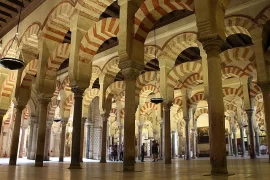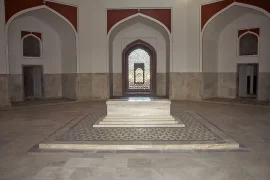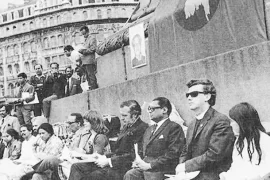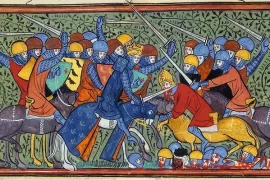The foundation of Baghdad by Caliph Al-Mansur in the 8th century marked a pivotal moment in history. This article explores the significance and impact of this remarkable event, shedding light on the vision, planning, and lasting legacy of the Abbasid Caliphate’s capital city. Through its strategic location, architectural marvels, and intellectual contributions, Baghdad emerged as a vibrant center of culture, knowledge, and innovation.
The Vision of Caliph Al-Mansur
The Selection of a Strategic Location
In 762 Caliph Al-Mansur consolidated his control over Arabs and Persians following the suppression of Alids and Abu Muslimiyya rebellions. After that, he envisioned a grand city that would serve as the political, economic, and cultural hub of the Islamic world. He chose the site of Baghdad due to its favorable geographic position, situated at the crossroads of major trade routes.
Situated in central Mesopotamia, Baghdad stood 15 miles north of the former Sasanid capital, Ctesiphon. The strategic location of the city was marked by the convergence of the powerful rivers Tigris and Euphrates, making it an ideal choice. The influence of Al-Mansur’s Persian confidantes likely played a role in his decision to select this significant site. [ El-Hibri, pg. 56]
Choosing the date of construction
The foundation of Baghdad was meticulously planned, with the involvement of various astrologers and their astronomical calculations. Caliph Al-Mansur sought the guidance of three renowned astrologers: Nawbakht, a Zoroastrian; Mashallah, a Jewish scholar; and Ibrahim b. Habib al-Fazari, a Muslim astronomer and translator. These experts studied the celestial movements to determine an auspicious date for commencing the construction of the city.
After careful analysis, the astrologers reached a consensus, identifying 2 August 762 as the chosen date. According to their calculations, Jupiter would be positioned in Sagittarius and in the ascendant, promising longevity to the dynasty, grandeur to the city, and an added “special quality” that no caliph would meet his demise within its boundaries. This belief led later chroniclers to highlight instances where caliphs happened to be outside the city when they passed away, reinforcing the supposed protection of Baghdad.
A Symbol of Islamic Supremacy
The official name of Baghdad was Madinat al-Salam [City of Peace]. Al-Mansur sought to establish Baghdad as a testament to the growing power and influence of the Abbasid Caliphate, symbolizing the strength and superiority of Islamic civilization. The construction of a magnificent city was seen as a reflection of the caliphate’s grandeur and prestige.
The Planning and Architecture
The Circular Design
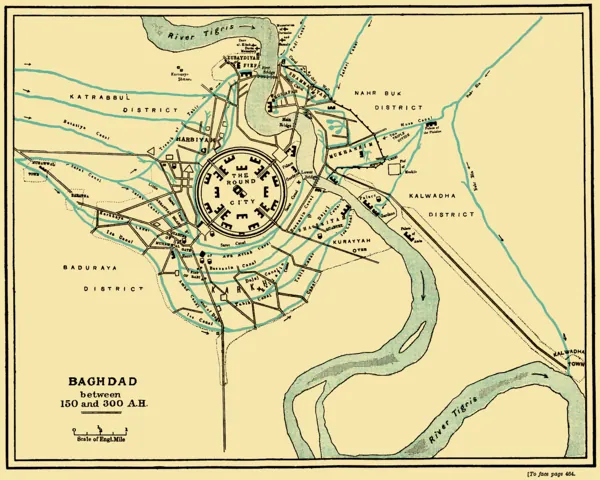
One of the most distinctive features of Baghdad was its circular layout, inspired by ancient Persian and Sasanian city planning principles. Divided into four equal sections and intersected by grand thoroughfares and surrounded by fortified walls, Baghdad was a marvel of Abbasid architecture. This design facilitated efficient governance, ease of movement, and aesthetic harmony.
The Splendor of Public Buildings
Baghdad boasted magnificent architectural marvels, including the Great Mosque of Baghdad (Al-Mansur Mosque) and the Caliph’s Palace. These structures showcased exquisite craftsmanship, intricate geometric patterns, and splendid domes, embodying the grandeur and opulence of the Abbasid dynasty.
The Intellectual Renaissance:
The House of Wisdom
Under the patronage of the Abbasid Caliphs, particularly Al-Mansur, Harun al-Rashid and Al-Ma’mun, Baghdad became a haven for scholars, philosophers, and scientists. The establishment of the House of Wisdom (Bayt al-Hikmah) attracted renowned thinkers from diverse fields, leading to significant advancements in mathematics, astronomy, medicine, and philosophy.
Translation Movement
Baghdad played a pivotal role in the translation movement, facilitating the translation of Greek, Persian, and Indian scholarly works into Arabic. This intellectual exchange enriched Islamic scholarship and contributed to the preservation and dissemination of ancient knowledge.
Destruction of Abbasid Baghdad

The once magnificent city of Baghdad experienced devastating destruction at the hands of Mongols. In 1258, the Mongols, led by Hulaku Khan, besieged and captured Baghdad, leaving a trail of destruction in their wake. The city was pillaged, its grand structures demolished, and its inhabitants subjected to unspeakable horrors. Following the Mongol invasion, Baghdad struggled with political instability and internal conflicts, leading to a decline in its prominence as a political and cultural center.
Enduring Legacy
Trade and Commerce
Baghdad’s strategic location made it a thriving commercial center, connecting East and West. Its bustling markets, known as “souks,” attracted merchants from around the world, fostering economic prosperity and cultural exchange.
Cultural and Literary Heritage
The Abbasid era saw a flourishing of arts, literature, and poetry. Baghdad became a vibrant center of cultural expression, with renowned poets and writers gathering in its salons and literary circles. The works of celebrated scholars such as Al-Khwarizmi, Al-Kindi, and Al-Farabi laid the foundation for future intellectual achievements.
Summary of the Foundation of Baghdad
The foundation of Baghdad represented an ambitious vision that transformed a once-barren landscape into a magnificent city. Through its strategic location, architectural marvels, and intellectual contributions, Baghdad became a symbol of Islamic civilization’s golden age. The legacy of this great capital endures in the fields of art, science, and culture. Undoubtedly, it reminds us of the remarkable achievements and lasting impact of the Abbasid Caliphate.
References
- El-Hibri, Tayeb, The Abbasid Caliphate, Cambridge University Press, 2021.

